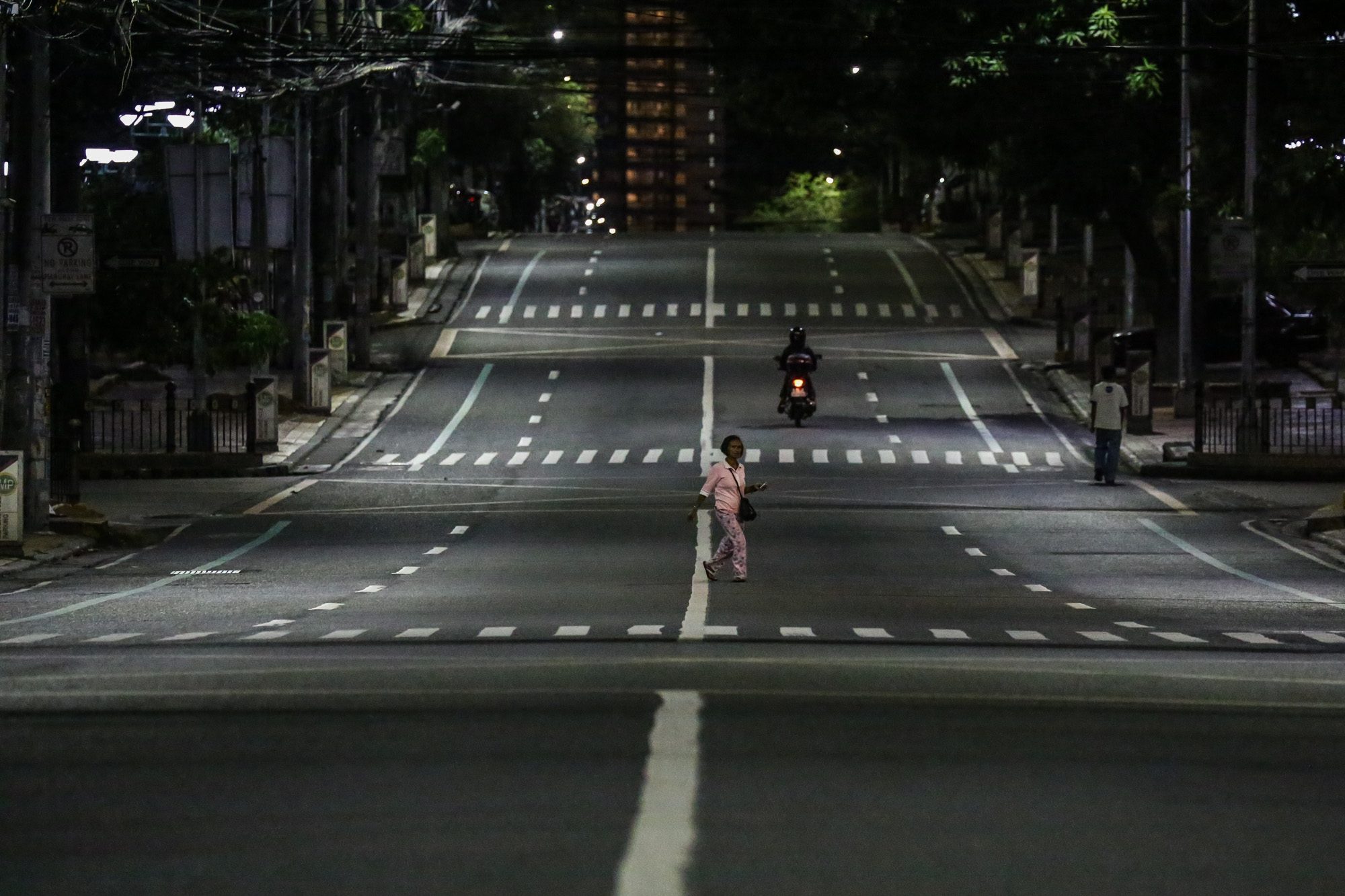SUMMARY
This is AI generated summarization, which may have errors. For context, always refer to the full article.

MANILA, Philippines – Malacañang announced on Friday, April 24 that Metro Manila, Central Luzon (Region III), Calabarzon (Region IV-A), and several provinces and islands in Luzon will remain under quarantine until May 15.
Presidential Spokesman Harry Roque read out the government taskforce’s decision in a taped public address aired on Friday.
“The decision regarding the ECQ when May 1, 2020 comes: maintain the ECQ for NCR, Region III, Region IV-A, and all other areas where the threat of COVID-19 is still great, until May 15,” said Roque in Filipino.
Lockdowns or ECQ was also declared for places outside Luzon: in Cebu province including Cebu City, Antique, Iloilo, Davao del Norte, and Davao City. These will also last until May 15.
The Luzon provinces that will be kept under lockdown are the following:
- Metro Manila
- Benguet*
- Pangasinan*
- Bataan
- Bulacan
- Nueva Ecija
- Pampanga
- Tarlac*
- Zambales*
- Batangas
- Laguna
- Cavite
- Rizal
- Quezon
- Albay
- Island of Mindoro (Oriental Mindoro and Occidental Mindoro)
- Catanduanes
VISAYAS
- Antique*
- Aklan*
- Capiz*
- Iloilo*
- Cebu*
- Cebu City*
MINDANAO
- Davao del Norte*
- Davao de Oro (formerly Compostela Valley)*
- Davao City*
(*The high-risk assessment for these areas would be reviewed and may change before April 30.)
The new measures were recommended to President Rodrigo Duterte by the government’s coronavirus task force, which he met with on Thursday. Duterte approved all the recommendations, Roque said.
The decision means Metro Manila, the seat of government and home to 13 million Filipinos, will have been on lockdown for two months by May 15.
The ECQ for the megacity began on March 15 – a measure that saw the suspension of public transportation, closure of all but essential business operations, and strict orders for citizens to stay inside their homes.
The Luzon-wide lockdown, meanwhile, began on March 17. Travel in and out of the island was prohibited, save for authorized personnel and trucks carrying food items and essential supplies.
Before the one-month original lockdowns for Metro Manila and Luzon ended, the President extended them until April 30. The latest one announced is the second extension.
Why those areas? The areas identified for the selective ECQ are places that continue to report a high number of COVID-19 cases, hence the need for strict measures to remain in place.
A study by the University of the Philippines discussed during Duterte’s meeting with health experts concluded that the following areas in Luzon have a higher than 90% probability of having an outbreak: Bataan, Batangas, Benguet, Bulacan, Cavite, Cebu, Davao del Sur, Laguna, Metro Manila, Nueva Ecija, Pampanga, Pangasinan, Quezon, Rizal, and Tarlac.
Outside Luzon, the study also identified Aklan, Cebu, and Davao del Sur provinces as places that are likely to experience an outbreak.
Experts have warned against lifting quarantine measures and social distancing rules too early, saying it could lead to higher spikes in positive cases.
What will happen to other parts of the country? Duterte also announced that a “general community quarantine” would still be enforced in “low-risk” or “moderate-risk” areas until May 15.
- Workers in low-risk industries can continue to work or operate in phases.
- The general population can only leave their homes to access basic necessities.
- Persons younger than 21 years old or those who are 60 years old and above must stay in their homes. So too must persons who are between those ages but live with people with co-morbidities (diabetes, lung problems, heart disease) or other risk factors.
- “Non-leisure stores” in malls or shopping centers can partially open.
- Universities and colleges can finish the academic year and issue credentials to students.
- Priority and essential construction projects may resume in accordance with Department of Public Works and Highways guidelines.
- Public transportation may operate at a reduced capacity.
- Local governments shall enforce a night curfew for non-workers.
- Airports and sea ports may operate only to ensure the unhampered flow of goods.
Before making his decision, Duterte had also spoken with former health secretaries and health policy experts, who advised that keeping the entire Luzon under lockdown after April 30 was unnecessary.
When the lockdown began, the Philippines had 187 coronavirus cases, with 18 deaths. Fast forward to April 23, the day the announcement was recorded, when the number of cases have grown to 6,981. Deaths now stand at 462. The number of recovered patients – 722 – has overtaken the fatalities, but the number of new cases increased by an average of 200 daily.
The day before the announcement, the Philippines recorded 271 new cases, the highest in over a week.
In televised addresses, Duterte had also often expressed frustration over citizens disobeying stay-at-home orders.
He even warned he would order the military to enforce lockdown rules in a manner “like martial law” should he hear of more violations. – Rappler.com
Add a comment
How does this make you feel?
There are no comments yet. Add your comment to start the conversation.